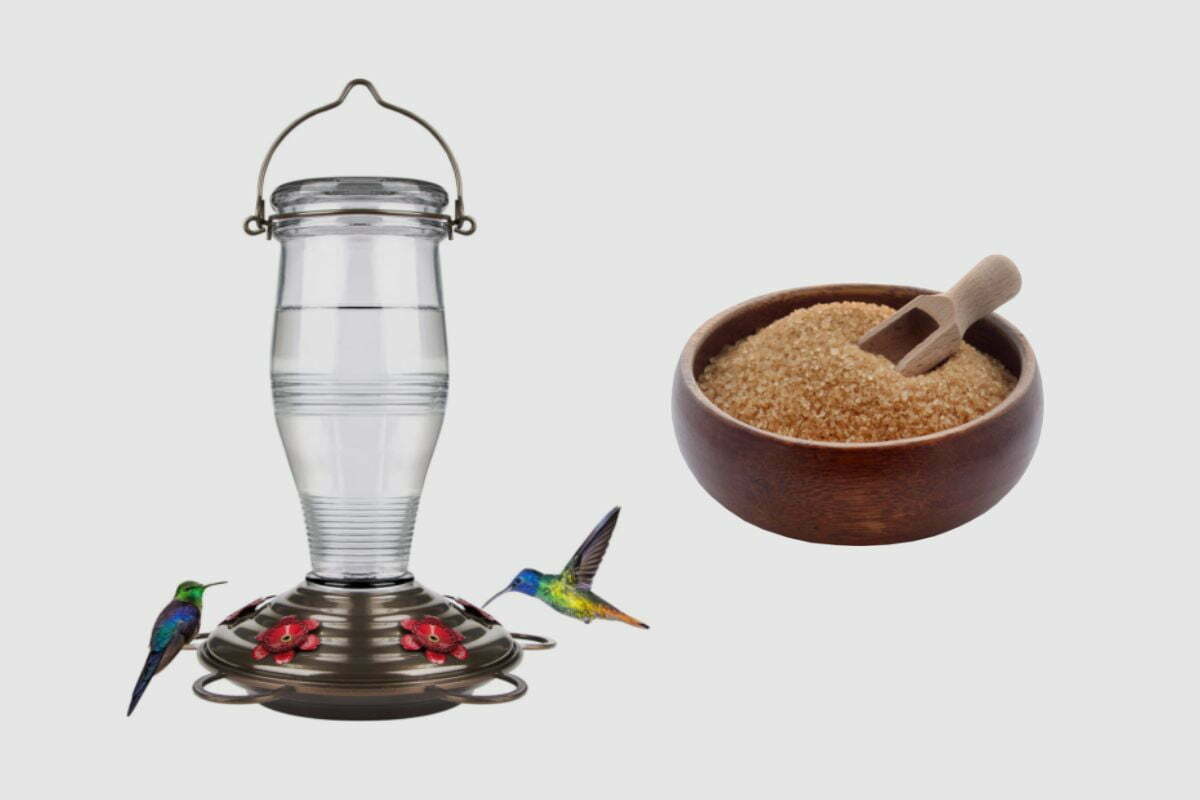Using brown sugar in hummingbird feeders is not recommended due to its negative effects on the birds. Brown sugar contains molasses, which is difficult for hummingbirds to digest and can ferment quickly, leading to the growth of mold that can be fatal for these delicate creatures. Instead, it is best to prepare hummingbird nectar using a 1:4 ratio of white granulated sugar to water. This ratio closely mimics the natural sugar content found in flower nectar, providing a safe and nutritious source of energy for hummingbirds.
It is important to avoid using honey, molasses, and artificial sugar substitutes in hummingbird feeders as well, as they can be harmful to these birds. Stick to white granulated sugar to ensure the health and well-being of hummingbirds.
Which Type of Sugar is Preferred by Hummingbirds?
Hummingbirds prefer white granulated sugar in their feeders because it is easily digestible and provides the necessary energy for their survival in the wild. Other types of sugar should be avoided as they may pose harm to these delicate creatures. Opting for white granulated sugar in hummingbird feeders is the ideal choice to support their health and well-being.
Types of Hummingbird Food Recipes
There are various hummingbird food recipes that are suitable for the needs and preferences of these small birds. The most common recipes include homemade nectar solutions that closely mimic the natural sugar content found in flower nectar. Alternatively, specialized hummingbird food products available in stores can also be used to meet their nutritional requirements.
Homemade Hummingbird Nectar Recipe
A simple and effective homemade hummingbird nectar recipe involves using a 1:4 ratio of white granulated sugar to water. Follow these steps to make your own hummingbird nectar:
- Measure 1 cup of water and 1/4 cup of white granulated sugar.
- Combine the sugar and water in a saucepan and bring it to a boil.
- Boil the mixture for 1-2 minutes, ensuring that the sugar dissolves completely.
- Allow the nectar to cool to room temperature.
- Fill the hummingbird feeder with the cooled nectar.
- Store any remaining nectar in the refrigerator for up to one week.
Nectar Recipe Tips
When preparing homemade hummingbird nectar, it is important to keep the following tips in mind to ensure a safe and nutritious food source for the birds:
- Always use white granulated sugar as it closely resembles the natural sugar content of flower nectar. Avoid using honey, brown sugar, molasses, or artificial sugar substitutes as they can be harmful to hummingbirds.
- Do not add red food coloring or any other additives to the nectar as they can be harmful to the birds. Many hummingbird feeders come in red, which is enough to attract the birds.
- Clean the hummingbird feeder with a solution of warm water and white vinegar at least once a week, or more often in hot weather, to prevent mold and bacterial growth.
- Replace the nectar every 2-4 days, or more frequently in hot weather, to ensure it remains fresh and safe for the hummingbirds to consume.
- Monitor the activity around your feeder and adjust the nectar recipe or quantity as needed to meet the demands of your local hummingbird population.
By using this traditional hummingbird nectar recipe, you can easily prepare an affordable and delightful hummingbird food that is more cost-effective than store-bought nectars or mixes.
What Other Types of Food Do Hummingbirds Eat?
In addition to flower nectar and homemade hummingbird feeder solutions, hummingbirds also feed on insects such as aphids, gnats, and flying ants. They enjoy consuming spiders, moths, and other invertebrates they encounter during their foraging. To attract more hummingbirds to your yard, consider installing bug traps near your plants to provide them with an accessible food source.
Conclusion
Providing the right type of food and environment for hummingbirds is essential to keep them coming back to your yard. Remember to use white granulated sugar in your homemade nectar solutions and maintain a clean and fresh feeder. Additionally, creating a welcoming habitat for these tiny creatures by offering insect-rich environments can further enhance their presence in your yard.
